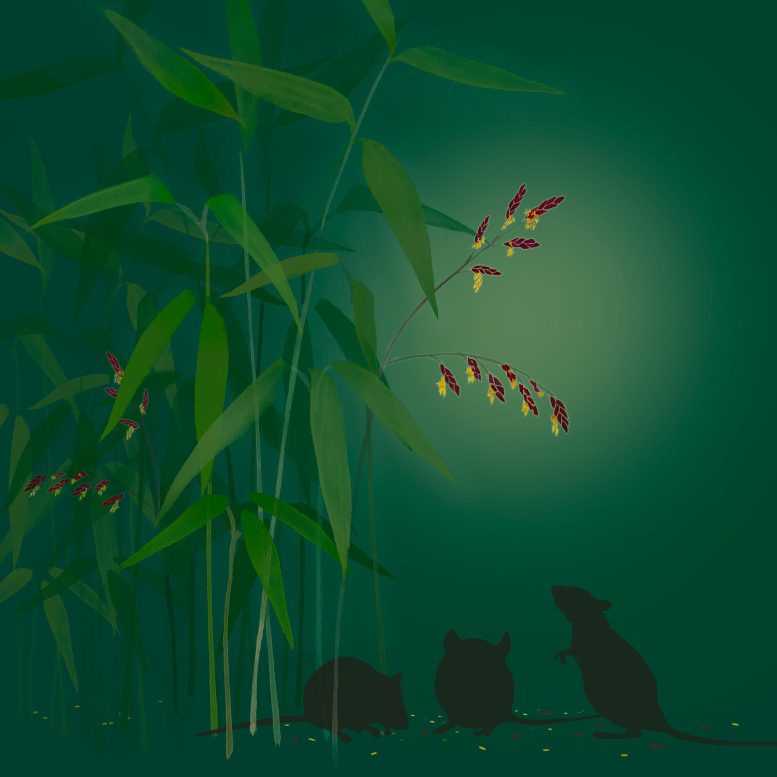
Once in a century flowering and seeding of dwarf bamboo boost mice populations. Credit: Reiko Matsushita
The flowering and seeding of dwarf bamboo were shown to boost mice populations.
Japanese field mice thrive in the large-scale flowering, seeding, and dying of dwarf bamboo (Sasa borealis), a phenomenon that only happens once every 120 years, according to a study from Nagoya University in Japan.
Dwarf bamboo flowering and seeding on a large scale is an uncommon occurrence. This plant phenomenon is known as masting, and the next one is not expected for more than 100 years. During such events, which happen during “mast years,” certain plants produce abundant seed yields. Plants that synchronize their flowering and fruiting in mast years do so simultaneously and over a wide area.
Rodent outbreaks are thought to be linked to consuming bamboo seeds during these mast years. This has gotten a lot of attention because of the agricultural and forest damage that occurs, as well as the possibility of disease transmission from these rodents. Previous reports of large-scale tree death during similar situations owing to rat epidemics have been made.
In the 2010s, the masting of dwarf bamboo, a Sasa species with a 120-year masting cycle, began to be observed on forest floors throughout Japan. A team of researchers from Nagoya University led by Associate Professor Hisashi Kajimura and doctoral student Hanami Suzuki, both from the Graduate School of Bioagricultural Sciences, investigated the effects of this simultaneous seeding of dwarf bamboo on local rodent populations in Aichi Prefecture, Japan. Comparing data from before and after the masting, the researchers found an increase in the populations of both the large and small Japanese field mice, but no similar effect was seen on Smith’s voles in the same area. Their findings were recently published in the journal Ecological Processes.
“The interesting biological phenomenon that masting of bamboo and dwarf bamboo can cause an outbreak of forest rodents has long been something of a legend,” says Kajimura. “This research is important because it clarifies this long-suspected phenomenon by comparing rodent populations before and after masting.”
“What was interesting was that the increased populations of both species of rodent that we studied remained even two years after the masting, even though the dwarf bamboo itself had died,” explains Suzuki. “There was also a high proportion of female juveniles in the population, suggesting that the simultaneous fruiting resulted in good conditions for reproductive females. These findings clearly show for the first time how the field mouse population responds to the seeds of Sasa, such as dwarf bamboo, especially those that have a longer cycle and larger supply.”
The team is excited about the implications of their study. “This research is expected to provide important clues for understanding the realities of sudden environmental changes in forest ecosystems and the interactions among the organisms that live there,” they said.
Reference: “How does the 120-year cycle mast seeding of dwarf bamboo affect the rodent population?” by Hanami Suzuki, Haruka Kashiwagi and Hisashi Kajimura, 15 June 2022, Ecological Processes.
DOI: 10.1186/s13717-022-00385-x
The study was funded by the Nagoya University Fusion Frontier Fellowship Program, which began in FY2021.

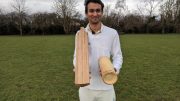
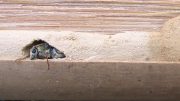
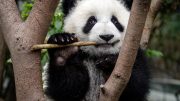

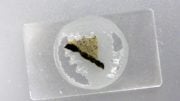
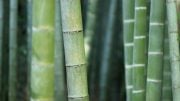
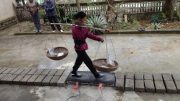
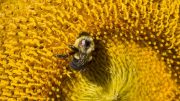
Be the first to comment on "Once in a Century Event Causes Mice Populations To Explode"